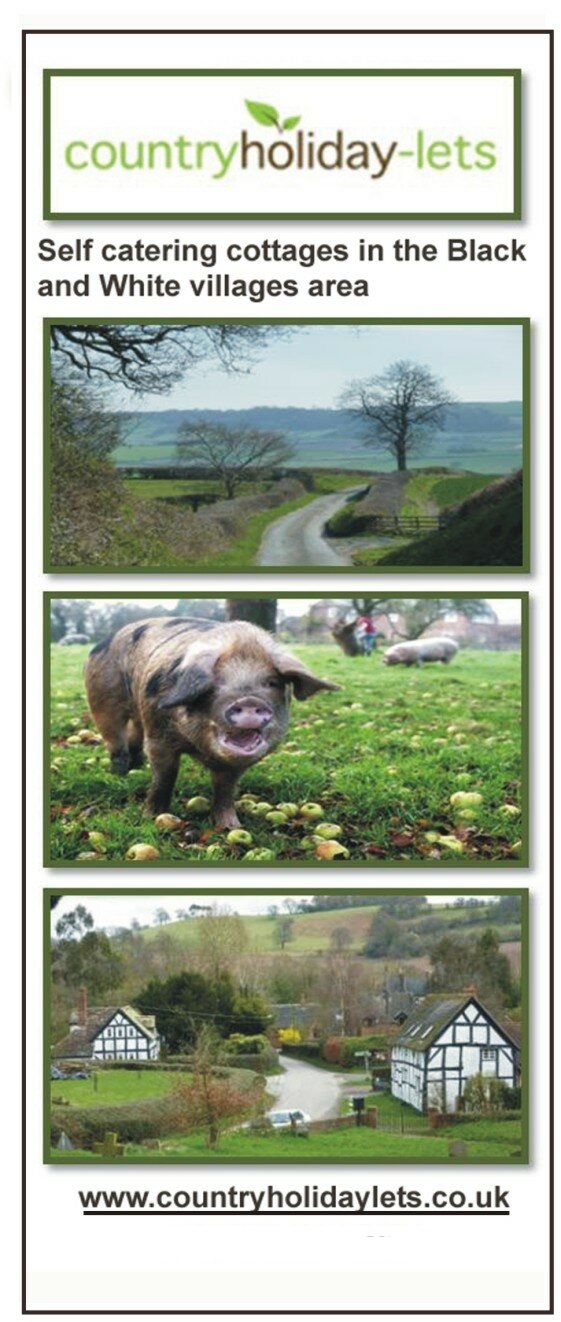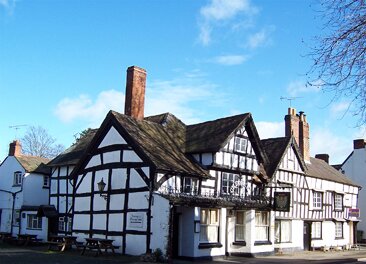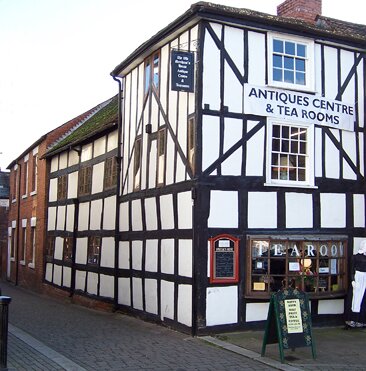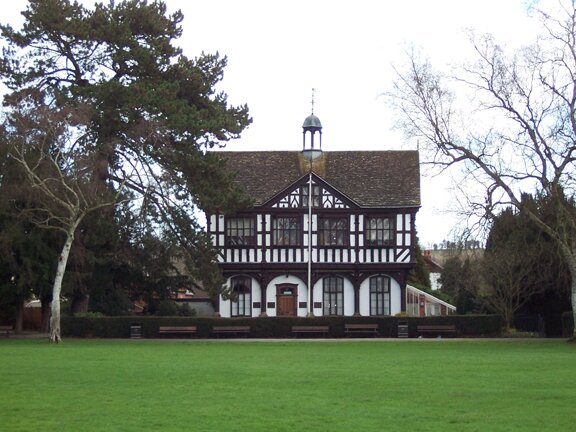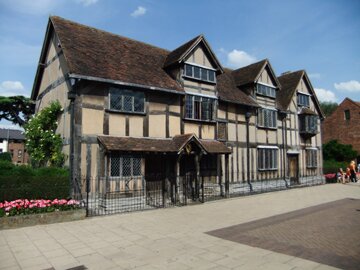Timber-frame buildings
Welcome to Black and White timber frame buildings. This site is dedicated to black and white or timber-framed [oak-framed] buildings generally, as well as modern timber-frame buildings.
It's not a directory, more a celebration of these simple, beautiful, ecological and robust houses which have withstood the test of time throughout the British Isles since the fourteenth century, are lived in to this day, and are still being built by carpenters, timber-frame builders and self builders today.
Adding to the existing village and town slideshows, there is now a slideshow for Hereford, although it doesn't do it justice as there are still too few and still lacking the centrepiece of Hereford's black and white, hopefully coming soon. I was sent some photographs of Nantwich a while ago and have finally created the Nantwich slideshow, although this too has very few pictures as yet. I've also heard from someone in Worcestershire, so expect a new slideshow soon.
Adding to the collection for Kingsland, I came across this barn below, such an unusual colour and shining in the dull light of a threatening storm day. On a visit some weeks later, it had lost the blue caste and instead looked somewhat pink - see lower picture. Neither has been altered or edited, the colours are as shot with my Olympus E-1 digital camera. Shows how light can change its colour temperature and our eyes adjust and we don't notice.
14th century vernacular timber-frame building
Some villages and even towns in some counties have predominantly black and white or, more accurately, timber-framed, houses with wattle and daub walls and . Cruck frames were a very common technique in vernacular house building, certainly pre-Norman, most probably Celtic. A cruck-frame consists of a pair of curved timbers (the cruck blades), which were often cut from one tree. A collar (and sometimes a tie-beam) joins the blades together. An example of a cruck frame can be seen below in this house in Ledbury, Herefordshire.
Originally, black and white buildings weren't black and white, but the natural colour of the oak beams and the colour of the soil in the locality, mixed with lime and ox blood- some can still be seen in this original condition today. They are all individual timber-framed buildings, built by carpenters who had spent long apprenticeships learning their craft, no two houses are alike but were crafted for their owners from trees growing close by. Larger buildings such as inns and barns were built by many hands in co-operation and to the design of an architect of grand buildings. More on timber frame construction here.
It is a myth that they were built from recycled ships' timbers as the timber would have been too hard to work with hand tools. A few close to the coast may have been so constructed, or had ship's timbers incorporated into them, but the effort to transport heavy timber long distances would have prevented this inland. They were commonly constructed from green timbers cut from freshly felled trees chosen locally for the job.
This site is intended as a resource on the subject of black and white timber frame buildings from 14th century wattle and daub to the present day. If anyone connected with this subject, either professional or amateur, wishes to submit information, photographs and articles, to display on the site, we are happy to oblige. Copyright of all materials will reside with the original copyright holder. We are particularly keen to see sets of photographs of a single village or town, and can turn these into a slideshow similar to those already available in the cinema.
Send in your photographs
If you own and live in one of the many timber frame houses in the UK, and would like to add your house [or shop, barn, tea room, pub etc.] to our database and your picture to our pages, email us and attach a picture file [jpg preferred], plus details such as location, approx. year built if known, special features etc., and we will add it to the slideshow. If at any point in the future you decide to sell it, you can easily add a 'for sale' sign here, or even, for a small sum, have a dedicated page just for your black and white house with extensive photographs including interiors, plus information and contact details for potential buyers to get in touch. If anyone living in a timber-frame village not so far featured here would like to take shots of all the houses, we would be overjoyed to make them into a slideshow and give you full credit as photographer with a link to your site if you have one.
Black and white based businesses
If you run a hotel or b&b in a black and white timber frame building, we definitely want to hear from you to promote your business. Many of our overseas visitors will be looking for information prior to a visit, and what better place to advertise your business, set as it is in a beautiful, traditional wood-framed building which they are keen to experience first hand. We can place your supplied ad or create one to your spec. and place it prominently on the site.
Contact us for details of advertising rates including banner ads. Whatever you or your company does, whether repairs to listed buildings, manufacture of on-site assembled modern timber-framed homes, or products and services related to conservation and preservation of old timber frame buildings, we want to hear from you, and you may wish to have a presence here, the home for black and whites and timber framed buildings on the net. More information on vernacular building.
Shakespeare's birthplace in Stratford-upon-Avon, restored to its original appearance
© Travel About Britain
